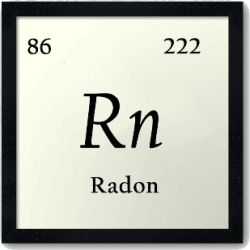Radon
Radon as a Water Contaminant
Maximum Contaminant Level
There are still no federally enforced drinking water standards for radon, but the EPA has proposed regulations. In the proposed standard, the radon level in the water will depend on whether the state has an EPA-approved indoor radon air program (these are called Multimedia Mitigation Programs).
States with such a program would have a standard of 4,000 picocuries/liter (pCi/L). States without a program would have a standard of 300 pCi/L. If the state has not developed an indoor air program, a public water system does have the right to develop its own local indoor radon program and thereby meet the higher standard of 4,000 pCi/L.
Public Health Concerns
Most of the radon in indoor air comes from the soil underneath the home. However, radon gas can dissolve in groundwater. When such water is used in the home for showering, washing dishes, etc., it is sufficiently volatile to escape from the water into the air; therefore, radon in water can contribute to the health concerns in breathing radon in the air. The USEPA estimates that between 30 and 600 lung cancer deaths a year result from radon contamination of drinking water.
Some radon remains in the water; drinking water containing radon also presents a risk of developing internal organ cancers, primarily stomach cancer. However, this risk is considered smaller than the risk of developing lung cancer from radon released to air from tap water. Radon contamination is not a concern for drinking water from surface water sources, as any radon in the water will have released into the air before reaching the consumer.
WETS Treatment
WETS uses aeration as the preferred method for radon removal from water. We usually suggest doing a pilot study to optimize the aerator sizing employed for radon water treatment. Our solutions are unique for each plant as we don’t offer an off-the-shelf product.
Solutions to Your Water Treatment Needs
Whether you want a new water treatment system installed, need your current one inspected and repaired, or just want a free quote, contact the WETS LLC. With years of experience in the industry, our skilled team members are trained and knowledgeable with a variety of leading water equipment and products. Our certified water purification experts are here to help.

